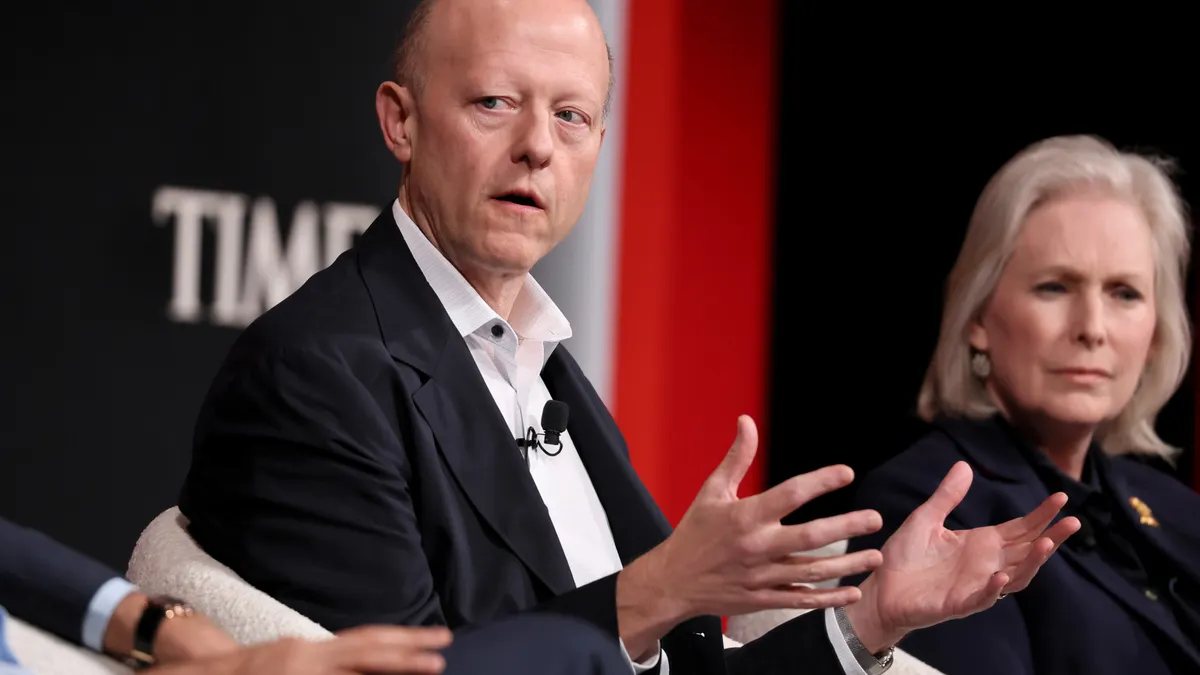Citi cut another 2,000 jobs in the third quarter, CFO Mark Mason told analysts Friday during a third-quarter earnings call, according to Bloomberg. That means the bank has trimmed roughly 7,000 roles so far this year — and the figure largely doesn’t include downsizing related to the reorganization Citi announced last month, Mason said. (Positions cut in September were largely contained to the top two layers of management at the bank.)
Citi hasn’t yet detailed how many jobs it stands to shed in its overall effort — nor has it shared the cost savings. Observers can expect a firmer figure in January at the bank’s fourth-quarter earnings presentation, CEO Jane Fraser said Friday.
A presentation posted on Citi’s website Friday, however, showed the bank intends to strip away five of its 13 layers of management.
“The changes will eliminate layers, duplication and complexity, allowing us to operate the bank more agilely and freeing our people up to focus on clients and execution,” Fraser said Friday, according to Bloomberg.
Asked for an example of how that looks in practice, Fraser said: “We had [human resources] in a region: You had the region head, you had the institutional client group head, you had the banking head … In addition, you had a North Asia head and a South Asia head. We’re just going to have the North Asia head and the South Asia head, and all of those roles collapse into those two.”
The bank also aims to realign under “single points of accountability,” Fraser said, meaning the bank is targeting co-heads of some units.
Some efficiencies may not be measured in reduced positions but in work eliminated. Citi has cut 60 management committees, which Fraser said “frees up over tens of thousands of people-hours annually.”
And the bank has identified 1,000 internal profit-and-loss reports it says it will no longer need to compile, according to Fraser. That accounts for half of the bank’s financial-management reports, she said.
Observers may not be able to tell from the bank’s baseline headcount figure that it’s downsizing, though. Citi’s workforce has remained steady at 240,000 for the past four quarters because the bank has hired tech staff in its continuing effort to modernize its data architecture and resolve two consent orders from 2020.
Citi spent about $3 billion on tech in the third quarter, Mason said. But the short-term boost to expenses — which rose 6% during the three-month span — will eventually turn into long-term savings, he said.
“Undoubtedly, the technology investment, the automation that we're putting in place, the straight-through processing that occurs, the fewer reconciliations that are required, the streamlining from all of those layers that Jane mentioned we'll be eliminating — all of those things will also work to reduce headcount as well," Mason said, according to American Banker. "So while we're investing and hiring on the front end to capture the upside as markets turn [and] also as we position ourselves to grow with clients, we're also going to realize efficiencies that come out of headcount reduction.”
The bank will realize a lower headcount, too, as it sheds the vestiges of its retail presence in 14 international markets.
Mason on Friday noted that the bank’s severance charges for the year so far have totaled $650 million. That’s a jump from $450 million throughout 2023’s first half, when Mason said the bank had booked severance costs for 5,000 positions.
Citi’s top managers are expected to detail their workforce-cut plans by the end of November, triggering layoffs that will "cascade" through the company "at pace,” Fraser said, and continue through the end of 2024’s first quarter.
“This is a relentless execution," Fraser said, according to American Banker. "We're getting a lot done. We don't pretend we're at the end of the road there — we're not there yet — but we're getting done what we said we'd do and building up those proof points so that you can see us achieve those return targets.”
Those targets include an efficiency ratio of less than 60%, a common equity tier 1 capital ratio of 11.5% to 12% and a return on tangible common equity ratio of 11% to 12%.
“We’ve made tough decisions here,” Fraser said. “At the end of the work, we will have a simpler firm that can operate faster, better serve our clients and unlock value for our shareholders.”














